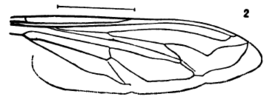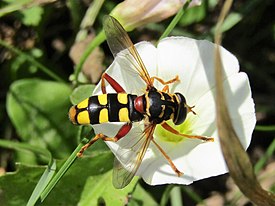| Milesia | |
|---|---|
 | |
| Milesia crabroniformis | |
| Scientific classification | |
| Domain: | Eukaryota |
| Kingdom: | Animalia |
| Phylum: | Arthropoda |
| Class: | Insecta |
| Order: | Diptera |
| Family: | Syrphidae |
| Subfamily: | Eristalinae |
| Tribe: | Milesiini |
| Subtribe: | Milesiina |
| Genus: | Milesia Latreille, 1804 [1] |
| Type species | |
| Syrphus crabroniformis | |
| Synonyms | |
Milesia is a genus of very large hoverflies, [10] which mimic social wasps. For example, the European species Milesia crabroniformis is a convincing mimic of the hornet species Vespa crabro . Milesia are predominantly Palaeotropical in distribution almost entirely Oriental. [11]
Contents
The Larvae are of the short-tailed type, found in decaying heartwood of deciduous trees, including rot-holes. [12]





